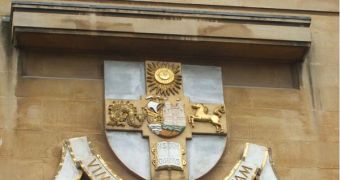An archaeologist at the University of Bristol made a significant discovery while visiting the seaside Torquay Museum, in the United Kingdom. The investigator immediately realized that one of the coffins on display was in fact more important than his colleagues had previously realized.
Artifacts such as this one are extremely rare, and this particular one may have very well belonged to a senior Egyptian official, or maybe even the son of a pharaoh or king. The discovery was made by Bristol expert Dr. Aidan Dodson.
The expert, who holds an appointment as a senior research fellow in UB Department of Archeology and Anthropology, was on a mission to catalog every single coffin and sarcophagus that are on display in museum across English and Welsh provinces.
At the Museum, the sarcophagus was holding Psamtek, an ancient Egyptian mummy of a boy that lived more than 2,500 years ago. The remains were scanned using an advanced CT machine back in 2006, as investigators were trying to establish his cause of death.
“When I walked into Torquay Museum for the first time I realized that the coffin was something really special. Not only was it of a design of which there is probably only one other example in the UK (in Bristol), but the quality was exceptional,” Dr. Dodson explains.
“Cut from a single log of cedar wood, it is exquisitely carved, inlaid and painted. For a child to have been given something like that, he must have had very important parents – perhaps even a king and queen,” he explains.
Dr. Dodson adds that all attempts to learn the boy's real name have failed. The section of the coffin where the name was written is very badly damaged, so researchers cannot make out any of the critically-important markings.
According to the investigators, the mummy itself is no less than 1,000 years younger than the coffin which holds it. While previously the focus of all investigations was the mummy itself, the spotlight has now shifted to the sarcophagus.
“It's an extraordinary discovery and means that the coffin is now the most spectacular exhibit in our entire collection. It's extremely rare – even the British Museum doesn't have one quite like it,” says Barry Chandler, the Curator of the Torquay Museum.
The newest dating studies demonstrate that the sarcophagus was created between 1525 and 1470 BC, not 500 to 700 BC, as previously indicated. “Not only has it gained an awful lot of age, but it has gone back to one of the most famous Egyptian dynasties of all,” Chandler explains.

 14 DAY TRIAL //
14 DAY TRIAL //